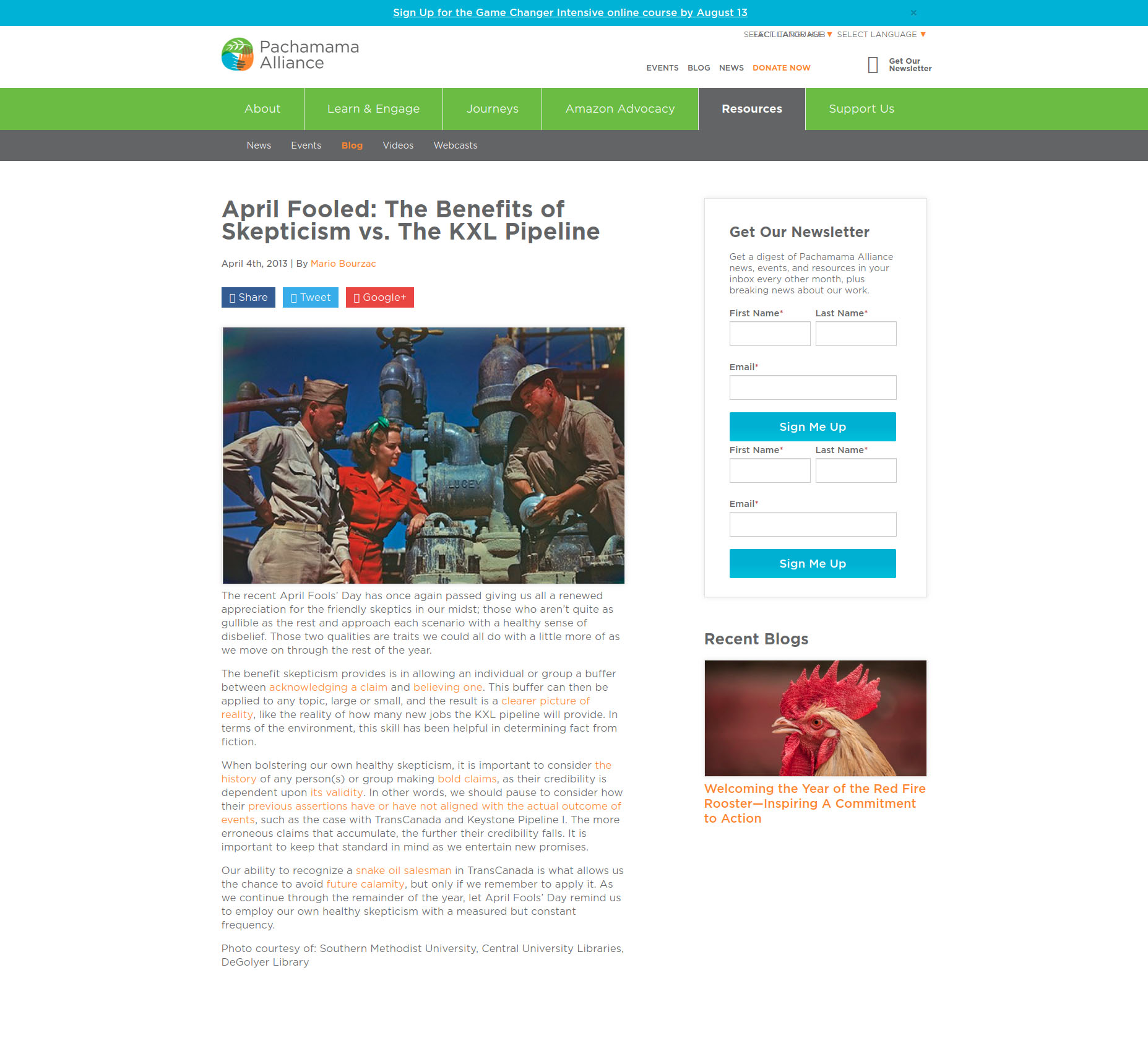
April Fooled: The Benefits of Skepticism vs. The KXL Pipeline
The recent April Fool's Day has once again passed giving us all a renewed appreciation for the friendly sketpics in out midst; those who aren't quite as gullible as the rest and approach each scenario with a healthy sense of disbelief. Those two qualities are traists we could all do with a little more of as we move on through the rest of the year.
The benefit skepticism provides is in allowing an individual or group a buffer between acknowledging a claim and believing one. This buffer can then be applied to any topic, large or small, and teh result is a clearer picture of reality, like the reality of how many new jobs and KXL pipeline will provide. In terms of the environment, this skill has been helpful in determining fact from fiction.
When bolstering our own healthy skepticism, it is important to consider the history of any person(s) or group making bold claims, as their credibility is dependent upon its validity. In other words, we should pause to consider how their previous assertions have or have not aligned with the actual outcome of events, such as the case with TransCanada and Keystone Pipeline I. The more erroneous claims that accumulate, the further their credibility falls. It is important to keep that standard in mind as we entertain new promises.
Our ability to recognize a snake oil salesman in TransCanada is what allows us the chance to avoid future calamity, but only if we remember to apply it. As we continue through the remainder of the year, let April Fools’ Day remind us to employ our own healthy skepticism with a measured but constant frequency.
